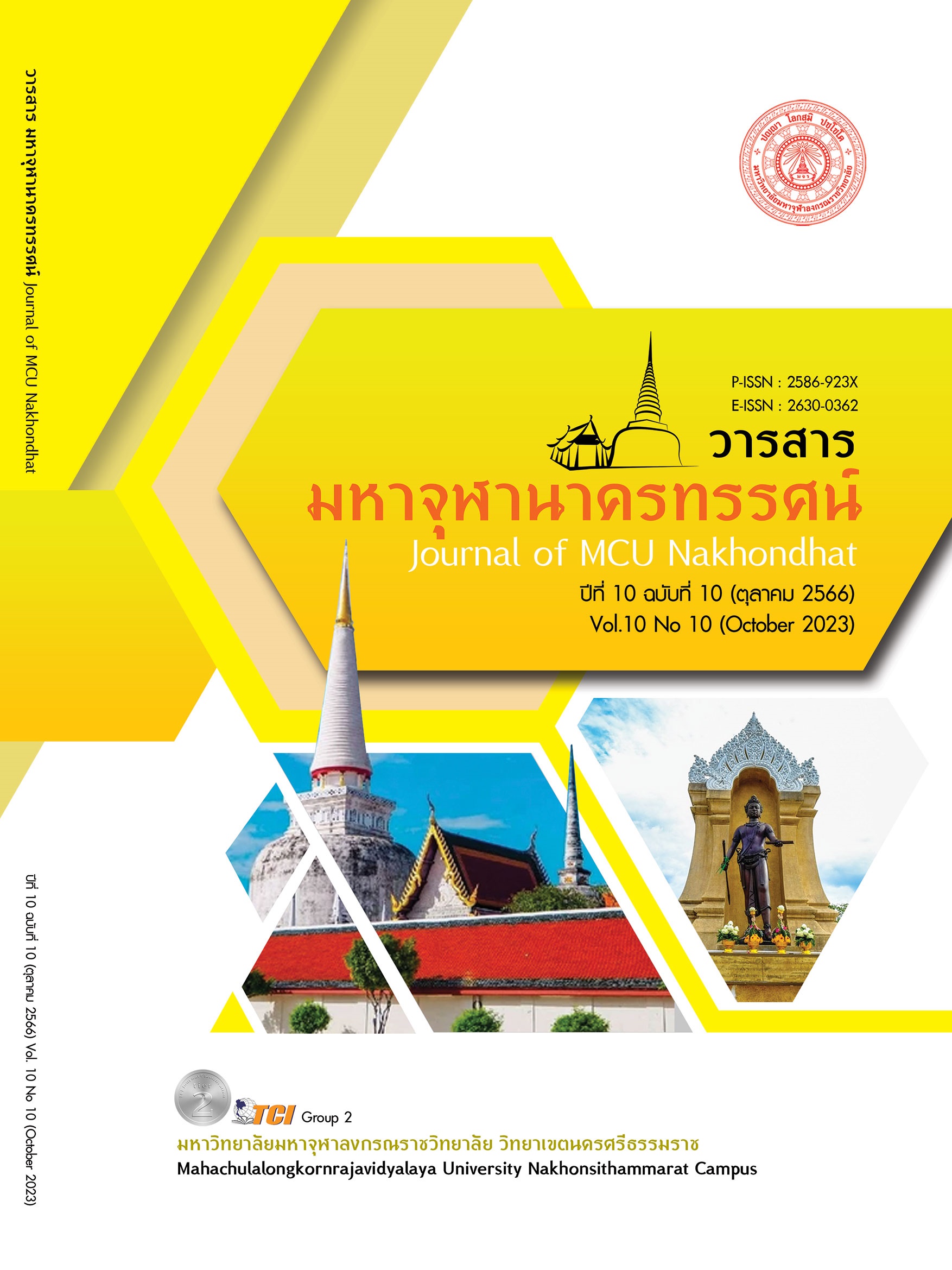PREVENTING CYBERCRIME IN COMMUNITIES IN ORDER TO DEVELOP THE COMMUNITIES INTO DIGITAL CITIZENS
Main Article Content
Abstract
This research article aims to: 1) Study the current situation of Cybercrime problems occurring in the communities, 2) Develop and disseminate knowledge about Cybercrime prevention towards digital citizenship development, and 3) To prepare and disseminate a community handbook on preventing technological crimes that occur in the communities of Chom-Bueng, Berkprai, and Suan Phueng sub-districts in Ratchaburi province. The research methodology is a mixed-method approach, including qualitative research through in-depth interviews and group interview, as well as quantitative research through questionnaires. The research findings revealed that the current situation of cybercrimes in the communities of Ratchaburi province can be categorized into five characteristics: 1) The problem of deception by call center gangs, 2) The problem of online product fraud, 3) The problem of social media account hacking, 4) The problem of being deceived in order to use documents and personal information to facilitate future offenses, and 5) The problem of solicitation to open a deposit account with a financial institution with compensation. The researchers propose a strategy to address these issues within the community. This strategy involves enhancing digital citizenship skills among the residents of Ratchaburi Province. The aim is to educate and empower them to use digital technology wisely, self-manage, stay informed about digital technology risks, protect themselves from various threats, and respect their own and others' rights and responsibilities within society. Additionally, it includes disseminating this knowledge widely through self-learning from community handbooks on preventing technological crimes in the current context to the people of Ratchaburi Province.
Article Details

This work is licensed under a Creative Commons Attribution-NonCommercial-NoDerivatives 4.0 International License.
References
กิตติศักดิ์ คุรุนันท์ และทัชชกร แสงทองดี. (2566). แนวทางการป้องกันอาชญากรรมไซเบอร์ของประเทศไทย. วารสารการบริหารนิติบุคคลและนวัตกรรมท้องถิ่น, 9(6), 179 - 190.
ชฎาภรณ์ สิงห์แก้ว. (2564). บทบาทภาครัฐในการป้องกันอาชญากรรมไซเบอร์เพื่อความมั่นคงทางเศรษฐกิจและสังคม. วารสารวิชาการมหาวิทยาลัยการจัดการและเทคโนโลยีอีสเทิร์น, 18(1), 539 - 552.
ดิเรกฤทธิ์ บุษยธนากรณ์ และสุมนทิพย์ จิตสว่าง. (2556). การเปลี่ยนรูปแบบของอาชญากรรมในศตวรรษที่ 21: ปัญหาอาชญากรรมลูกผสมในสังคมไทย. วารสารสังคมศาสตร์ จุฬาลงกรณ์มหาวิทยาลัย, 52(1), 1 - 29.
บุญชม ศรีสะอาด. (2554). การวิจัยเบื้องต้น. (พิมพ์ครั้งที่ 9). กรุงเทพมหานคร: สุวีริยาสาส์น.
ประชาชาติธุรกิจ ออนไลน์. (2565). แก๊งคอลเซ็นเตอร์ระบาด พุ่ง 270% ตำรวจ-กสทช. ล้อมคอก”. เรียกใช้เมื่อ14 มิถุนายน 2565 จาก https://www.sec.or.th/TH/Template3/Articles/2561/ac-post-25611024-warning-icoandcrytocurrency.pdf
ปริย เตชะมวลไววิทย์. (2561). ระวังถูกหลอกลงทุน ...ไอซีโอและคริปโทเคอร์เรนซ. เรียกใช้เมื่อ 13 มิถุนายน 2565 จาก https://www.sec.or.th/TH/Template3/Articles/2561/ac-post-25611024-warning-icoandcrytocurrency.pdf
สรวิศ บุญมี. (2566). ภัยแก๊งคอลเซ็นเตอร์ จากอาชญากรรมทางเศรษฐกิจสู่อาชญากรรมทางเทคโนโลยี. วารสารวิชาการมหาวิทยาลัยอีสเทิร์นเอเชีย ฉบับวิทยาศาสตร์และเทคโนโลยี, 17(2), 19 - 26.
สุรัตน์ สาเรือง. (2561). อาชญากรรมบนอินเทอร์เน็ต. วารสารสหศาสตร์ (คณะมนุษยศาสตร์และสังคมศาสตร์ มหาวิทยาลัยมหิดล), 18(2), 134 - 161.
สุวรรณี ไวท์ และคณะ. (2564). มนุษย์กับความเป็นพลเมืองดิจิทัล. วารสาร มจร มนุษยศาสตร์ปริทรรศน์, 7(2), 339 - 355.
MGR Online. (2565). ปอท.เปิดสถิติอาชญากรรมทางเทคโนโลยี “หมิ่นประมาท” มากสุด “แฮ็กข้อมูล” อันดับ 2. เรียกใช้เมื่อ 14 มีนาคม 2565 จาก https://m.mgronline.com/onlinesection/detail/9580000026336


